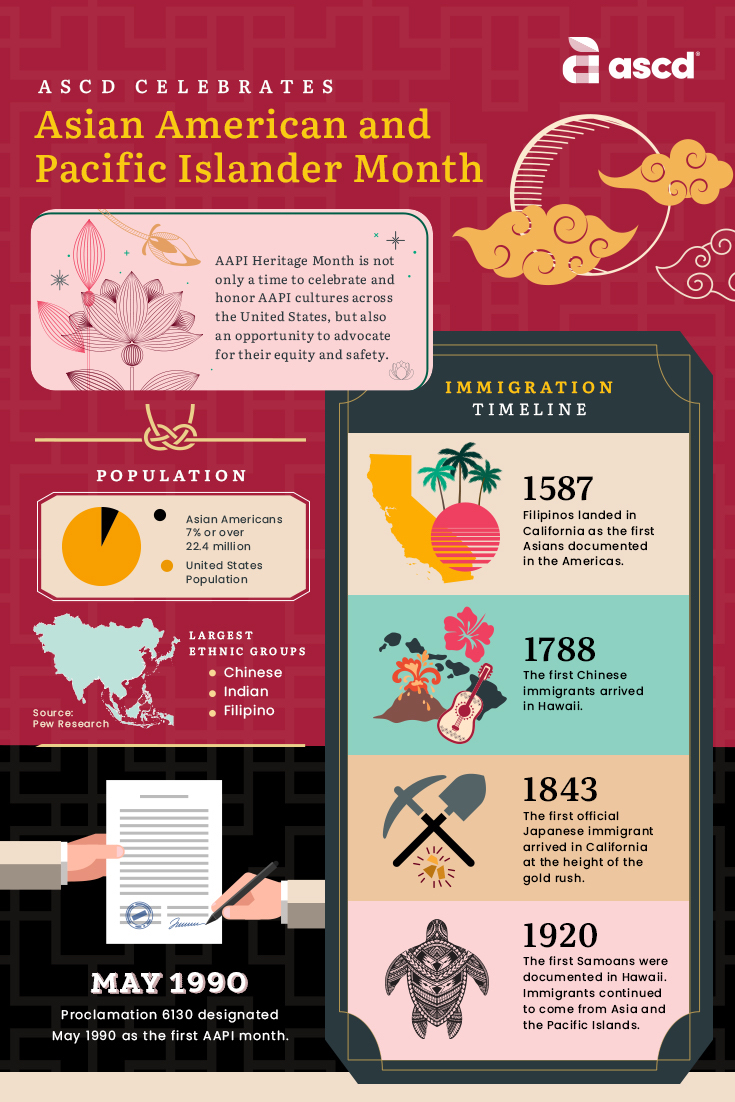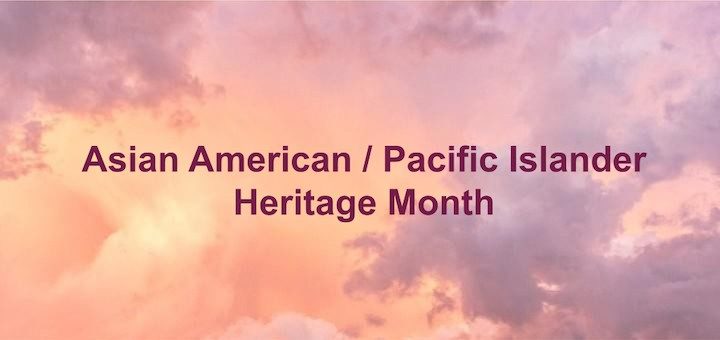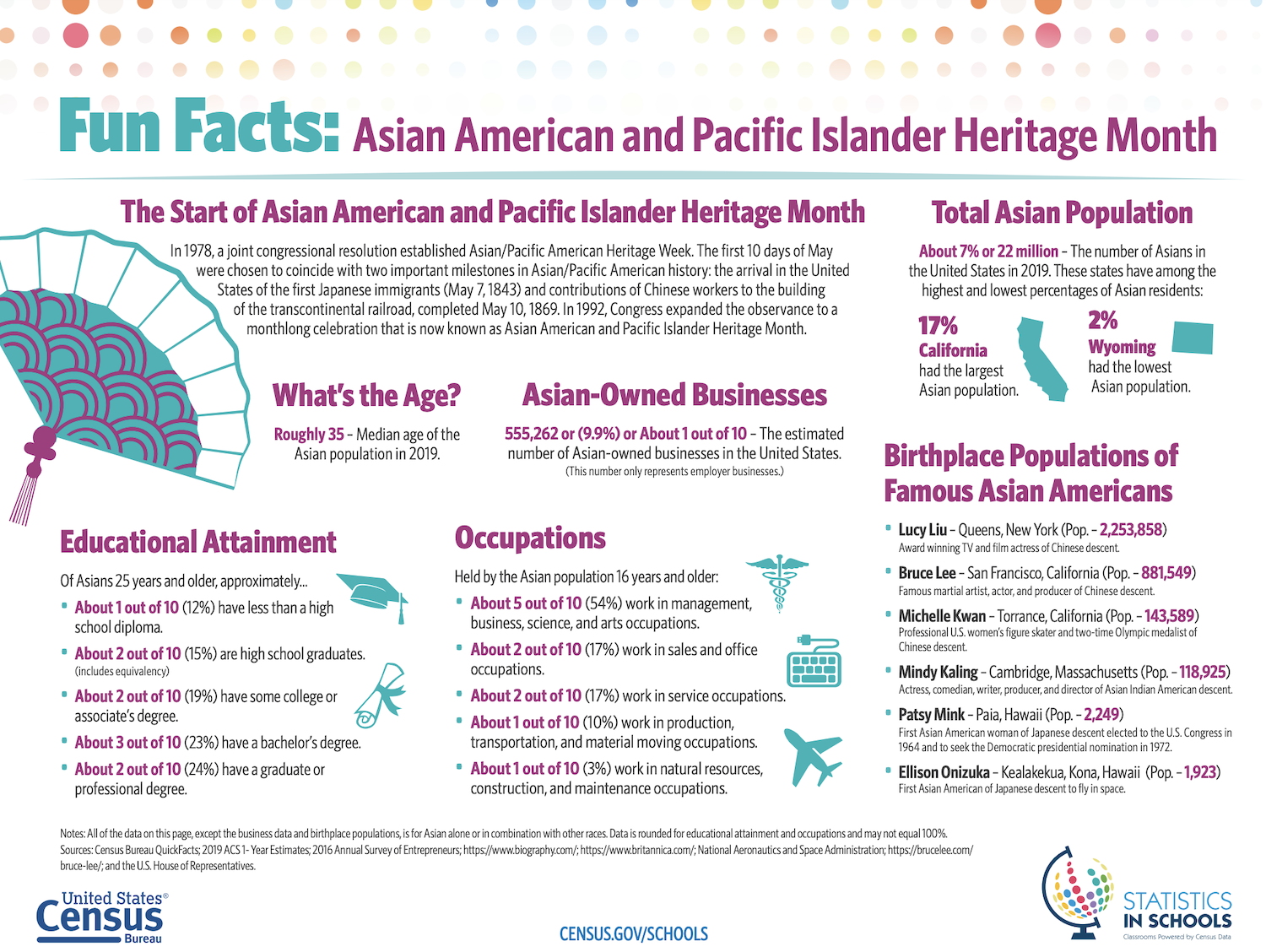Including AAPI Heritage in Classroom Learning
In 1978 a joint congressional resolution established Asian/Pacific American Heritage Week to highlight AAPI contributions to US culture and the history of their experience in the country. In1992 Congress expanded the observance, Asian American and Pacific Islander Heritage Month, celebrated during the month of May.
For a succinct introduction to Asian and Pacific islanders’ experiences in the United States, see the 2021 Time video The Immigrants of Angel Island: The History You Didn’t Learn. It shows the link of early discriminatory treatment toward Asians to the treatment of Asians once Covid-19 appeared in the US.
The Time video features a succinct discussion on the very different treatment of largely European immigrants at Ellis Island and of those at San Francisco’s Angel Island where Asians entered the country from 1910 until 1940. The 12-minute video has one sentence about Asian women being denied entry because they were seen as sex workers and a section on the challenges an Indian family faced that led to the husband’s killing himself.
Students can read Asian Americans Then and Now: Linking Past to Present from Asia Society’s Center for Global Education for an overview of the legal and social discrimination AAPI residents encountered.
Visiting Federal Sites
US government resources for AAPI Heritage Month vary in depth. Resources from the main government link include the National Archives which offers primary sources on China, Japan, Vietnam, Japan and Hawaii. National Park Service resources are limited.
The National Endowment for the Humanities includes resources on Asian art and literature and their impact on US culture. NEH also covers the internment of US citizens of Japanese descent during World War II and civil rights. NEH’s EDSITEment! is particularly helpful for a fuller discussion of terminology, history, and cultures as well as immigration. EDSITEment! also features several lesson plans.
The Library of Congress covers immigrants from several areas including China and Japan. The section on China includes discrimination against Chinese as well as anti-immigrant legislation in late 1800s and early 1900s. The 1900s legislation includes Asian countries beyond China.
The Smithsonian’s Folklife Center provides videos and lessons on AAPI history and culture. SI’s Learning Together offers a sprinkling of AAPI content.
The US Census Bureau has updated its Facts for Features listing for Asian American and Pacific Islander Heritage Month. Tthe Census Bureau’s Statistics in Schools offers this Fun Facts infographic accompanied by a teaching guide.
Another Census resource is a chart of “Top Languages Other than English Spoken in 1980 and Changes in Relative Rank, 1990-2010” showing increases in Chinese, Vietnamese, Tagalog (spoken in the Philippines), and Korean speakers during that 30 year period.
Looking beyond Washington
The NEA’s AAPI collection is arranged by age and offers lesson units, book lists, and much more including several links about the arts. In particular, with summer break coming up for many teachers, you may want to spend a few hours or days exploring the online resources of the Asian Art Museum in San Francisco. Access lots of hands-on activities grouped by Asian American, Southeast Asia, West Asia, the Diaspora, and several more. The site offers extensive access to its collections online and provides videos, most of which appear to target grownups.
iCivics links to its resources on AAPIs’ contributions in Congress and Supreme Court decisions resulting from three Asian Americans’ cases and also shares numerous AAPI resources at Nearpod.
The ADL also offers extensive resources. The ADL includes statistics from 2021, noting that “23 million Asian American people trace their roots to more than twenty countries in East and Southeast Asia and the Indian subcontinent, each with unique histories, cultures, languages and other characteristics.” The ADL provides a collection of lesson plans – several for middle graders – along with recommended books for students.
The organization adds that AAPI studies of culture along with history need to reach beyond May to the whole year. In addition, an ADL blog post, The Coronavirus Surfaces Fear, Stereotypes and Scapegoating, offers suggestions for how schools and families can address anti-Asian bias and scapegoating which have accompanied the Covid pandemic.
The Southern Poverty Law Center’s Learning for Justice provides several articles and blog posts. Included is a post about adding classroom content representing the The Diversity of Asian American and Pacific Islander Identities and another post on responding to the model minority myth. In addition, Learning for Justice offers a webinar on unpacking the origins, meaning and contemporary impact of the term “Asian American Pacific Islander.”
45 Novels Drawing on Asian Myth and Folklore, a 2021 article by Terry Hong at School Library Journal, includes lots of middle grades books.
In Celebrating Asian Pacific American History and Culture Reading Rockets links to its interviews with award-winning Asian Pacific American authors and illustrators, reviews of children’s books up to age 12, and more.
ASCD is sharing the AAPI Month infographic below. The organization invites readers to visit Twitter @ascd and Instagram here for AAPI history and culture highlights.

Download the infographic here.
If you have favorite AAPI Heritage Month resources to share with MiddleWeb readers, please share them below.




































